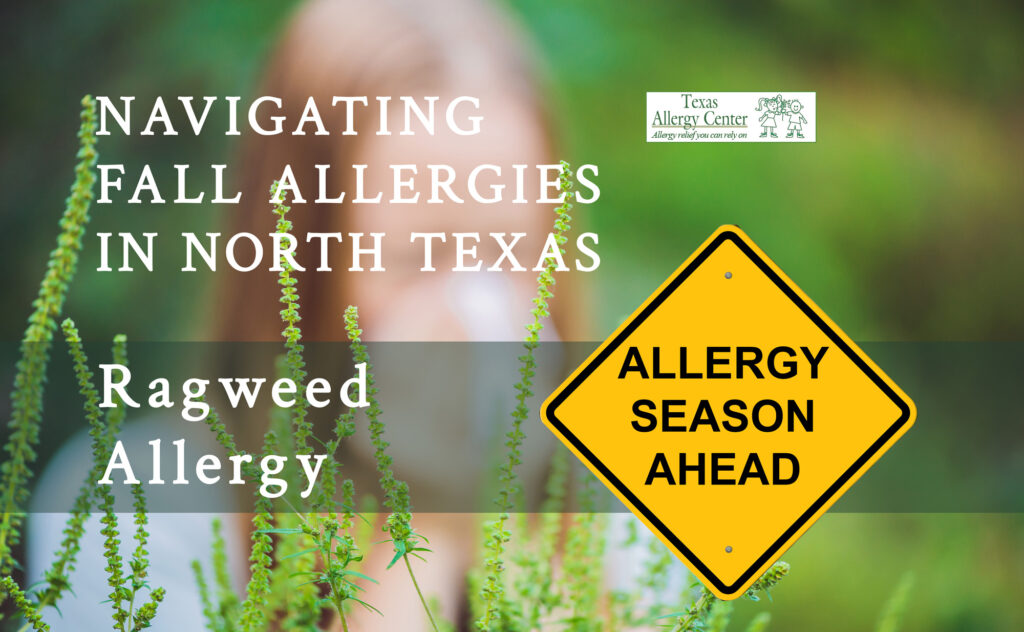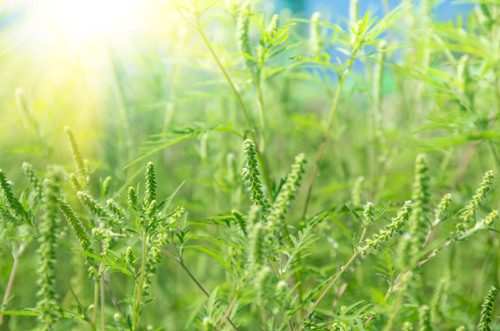04 Sep Texas Allergy Center Helps You Navigate Fall Allergies in North Texas: Ragweed Allergy

Ragweed pollen may be a seasonal nuisance in Texas, but understanding its characteristics and effects can help prevent allergic reactions. By staying informed, practicing allergen-reducing strategies, and partnering with an allergist, Texans can better navigate the ragweed season and enjoy life without the constant threat of ragweed allergy.
Ragweed affects millions of Texans annually, triggering allergic reactions and making life challenging. Scientifically known as Ambrosia artemisiifolia, it is a flowering plant native to North America. It thrives in various environments, from roadside ditches to open fields, and is particularly prolific in Texas due to the state’s diverse landscapes and favorable climate.

A single ragweed plant can produce up to a billion pollen grains in a single season. The grains are light and easily airborne, allowing them to travel great distances on the wind. This dissemination is why ragweed pollen levels can be high even in urban areas far from its natural habitat.
Ragweed season in Texas typically spans from late summer to early fall, peaking in August and September. The warm climate and extended growing season allow ragweed plants to thrive and release copious amounts of pollen. This period coincides with the start of the school year, making it particularly challenging for students and educators alike.
Common ragweed allergy symptoms include sneezing, runny or congested nose, itchy or watery eyes, and even exacerbation of asthma symptoms.
While it’s impossible to completely eliminate ragweed pollen, we offer these tips for Texans to manage its impact:
- Monitor Pollen Levels: Stay informed about local pollen forecasts. Visit the North Texas Pollen Station website for the latest counts. pollen.aaaai.org
- Limit Outdoor Exposure: On days when pollen counts are high, consider staying indoors during peak pollen hours, usually early morning and late afternoon.
- Keep Indoor Spaces Clean: Regularly clean and vacuum indoor spaces to minimize pollen accumulation. Using air purifiers with HEPA filters can help remove airborne pollen particles.
- Personal Protection: If outdoor activities are necessary, consider wearing sunglasses to protect your eyes and a pollen mask to reduce inhalation of pollen particles.
Our board-certified allergist and highly trained staff are here to help you enjoy being outdoors in Texas. We will address questions and concerns, and then find treatment and care that is right for you! Get started today.
